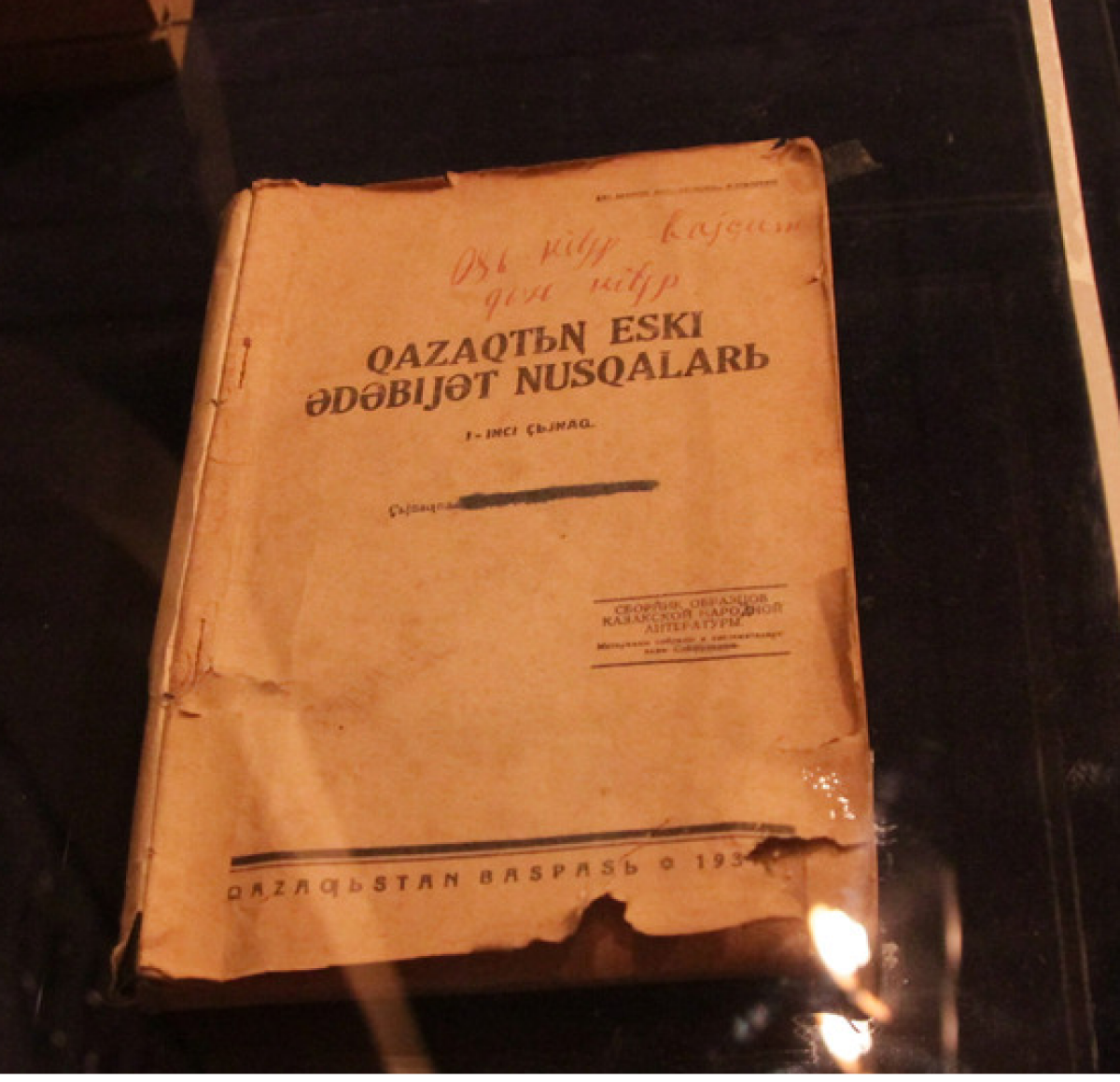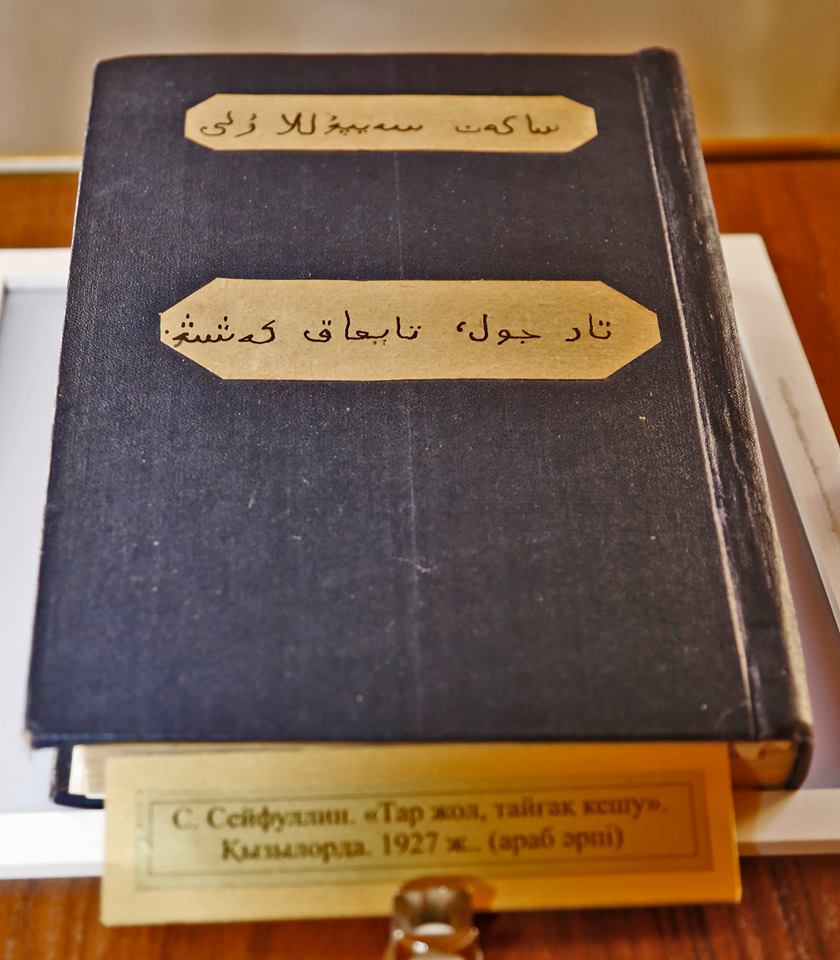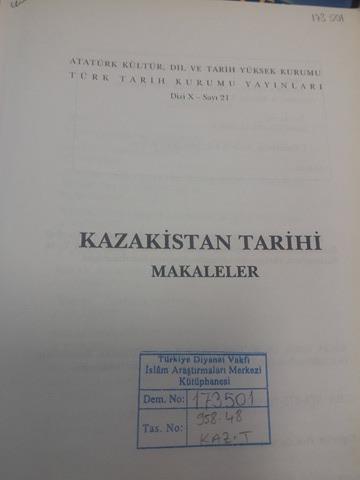
The greatest invention of the people is writing. Its origin is one of the complex problems of modern linguistics. The basis of modern writing is the ancient letter. The writing of the peoples of Central Asia and Kazakhstan arose in the early Middle Ages. The ancient Turkic peoples, who later became ancestors, including modern Kazakhs, played an important role in the history of Eurasia. And the Turkic language from the 5th to the 15th century was the language of interethnic communication for the most part. For example, with the Mongolian khans Batyi and Munke all official documents in the Golden Horde, international correspondence, besides the Mongolian, were also conducted in the Turkic language.
The formation and development of a language close to the modern Kazakh language took place in the 13th-14th centuries. One of the oldest types of letter script is the ancient Turkic script, which arose in the 6th-7th centuries.

One of the early monuments of such writing was discovered in 1896-1897 in Kazakhstan near Aulie-Ata (now the city of Taraz). There were found 5 stones with ancient Turkic inscriptions. And in 1940 in East Turkestan were found well-preserved 4 manuscripts of the ancient Turkic writing of the middle of the VIII century. These findings were of great scientific importance.
Arabic script was used in Central Asia and Kazakhstan in the spiritual and secular schools, in official correspondence. Columns, cornices, domes of buildings and structures were decorated with its beautiful ornament. Scientists and poets wrote their works in Arabic, decorating their pages with drawings executed often at a high artistic level. All the works of the outstanding thinkers of the East are written in Arabic and Farsi (Persian), because these languages were considered international.
In Kazakhstan, Arabic graphics were used for 900 years from the 10th to the 20th century. In 1912, Akhmet Baytursynov reformed the Kazakh script on the basis of Arabic graphics, making it possible to use it to millions of Kazakhs living abroad. He excluded all the purely Arabic letters not used in the Kazakh language, and added letters specific to the Kazakh language. The new alphabet, called "Zhana Yemle" ("New Spelling"), is still used by Kazakhs living in China, Afghanistan, and Iran. After 1917, the movement for the transition to the Latin alphabet began in Kazakhstan. The Arab letter, which in its time played a positive role in social development, now seemed to be a brake on historical progress.

In Kazakhstan, the movement for the transition to the Latin letter began in 1923. After numerous discussions in 1929, the Kazakh alphabet was translated into Latin script (latinization). Newspapers and magazines were printed in Latin script, and the Latin alphabet was introduced in schools. All this required a new form of training, huge expenditures on the production of fonts, the publication of textbooks and the training of teachers. The Kazakh alphabet on the Latin basis had 30 letters with the necessary additions to them for the transmission of specific sounds of the Kazakh language. However, the life of the Latin letter in Kazakhstan was short-lived from 1929 to 1939.
The hopes of the supporters of the Latin alphabet to grasp with its help the European culture did not materialize. Mastering the Latin letter mechanically did not ensure the mastery of the achievements of the European level of cultural development. Latinists were not able to organize in the school even the study of foreign languages. And yet this was a certain period in the development of Kazakh writing and book printing. The books of this period were included in the national fund in the form and content of the culture of the Kazakh people.
Then the translation into Cyrillic was carried out. The project of a new alphabet based on Russian graphics, consisting of 42 letters in accordance with the phonetic features of the Kazakh language, was proposed in 1940. Since that time, the printing of Kazakh books, newspapers and magazines, official correspondence and instruction in schools was conducted on the new Kazakh alphabet.
After gaining independence before the republics of the former USSR, the question of the Latin graphics again became. So, for example, in Moldova the decision to switch to the Latin graphics was made already in 1989, that is, even under the USSR. The same republics as Azerbaijan, Uzbekistan, and Turkmenistan began the transition to the Latin alphabet in the first years after gaining independence. Of course, their experience is very important in the transition to the Latin graphics of our country.

From the day of the founding of the Turkish Republic, the main principle of M.K. Ataturk was the implementation of ways to bring the Turkish society and the state closer to Western civilization. The Ottoman Empire was an Islamic state, and the alphabet was Arabic. In the written language of the Ottoman Empire, there were many Arabic and Persian words. Proceeding from this, it can be said that the common people did not understand the basic written speech of the Ottoman Empire. Also in the Arabic alphabet there were no letters replacing some letters of the Turkish language. Namely, in Arabic there were only 3 vowel sounds.
In connection with the strengthening in the twentieth century of nationalist ideas in the Ottoman Empire in 1851-1928, disagreements arose over the Turkish language and its future.
During the transition to the Latin alphabet of the Turkic-speaking countries of the Soviet Union, the reform on writing in Turkey had a special impact.
In 2012, the President of Kazakhstan Nursultan Nazarbayev instructed to switch from the Kazakh alphabet to Latin by 2025, and in the program article "Looking into the Future: Modernization of Public Consciousness" stated that by the end of 2017 it is necessary, with the help of scientists and the general public, to adopt a single standard version of the Kazakh alphabet in a new graphics.
According to a Leader of the Nation, the transition to the Latin alphabet also has its own deep historical logic. These are the features of the modern technological environment, and the features of communications in the modern world, and the features of the scientific and educational process in the 21st century.
Translated by Raushan MAKHMETZHANOVA
